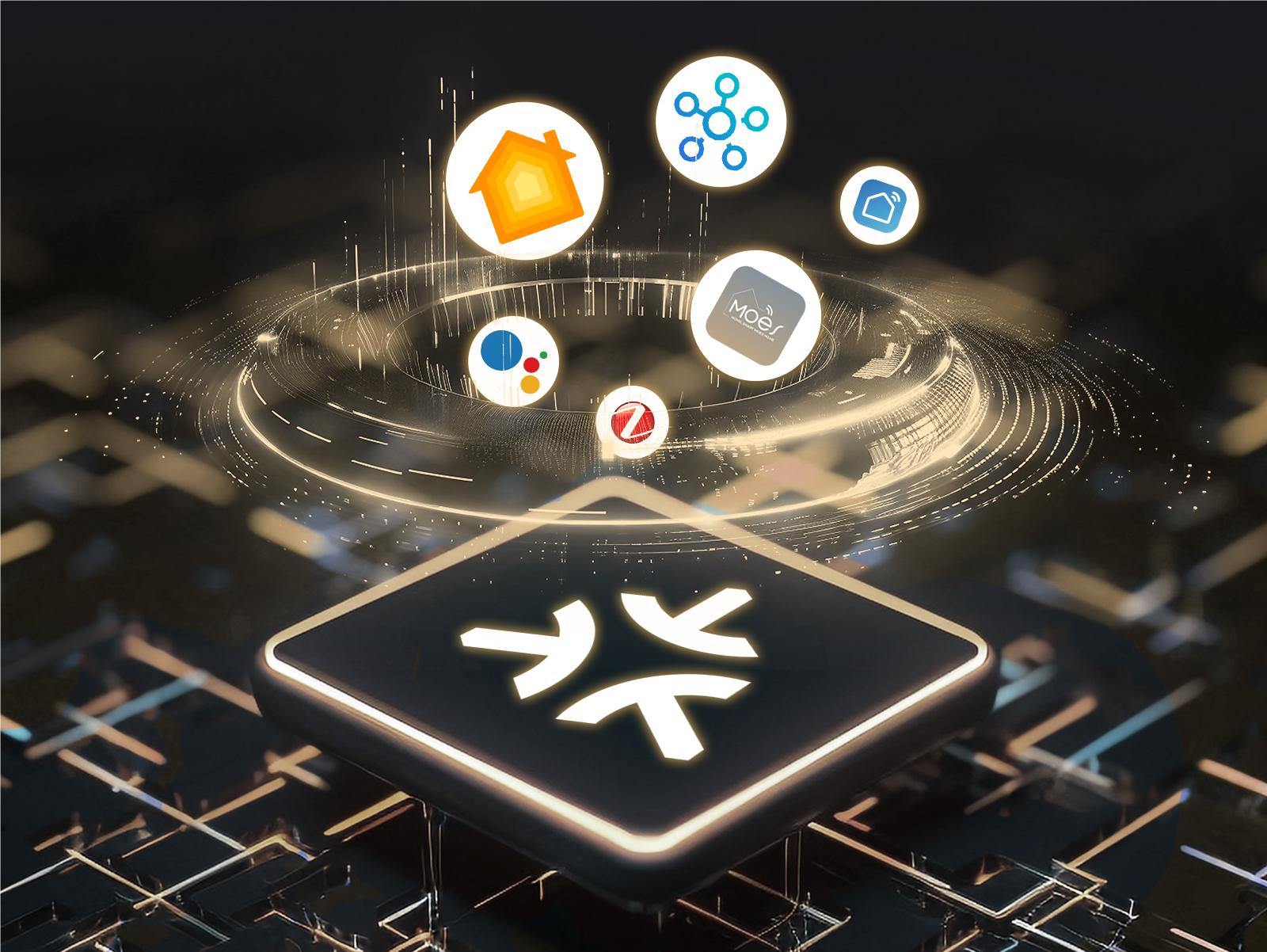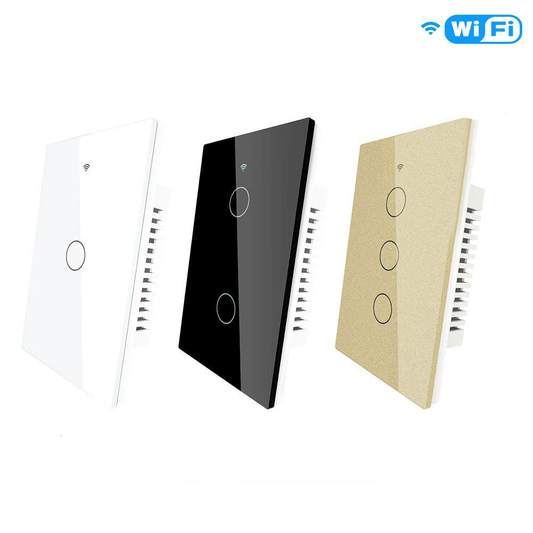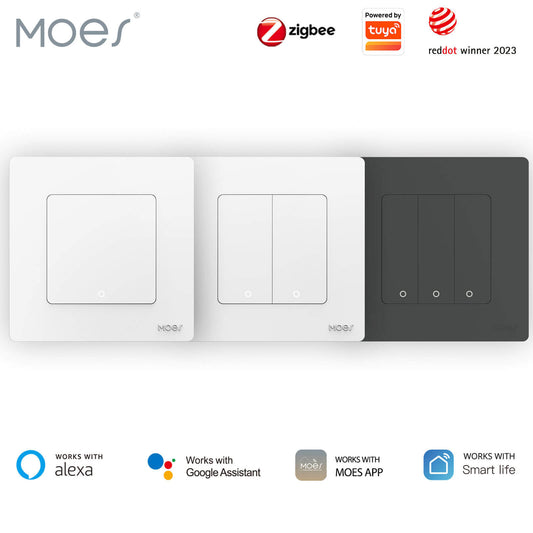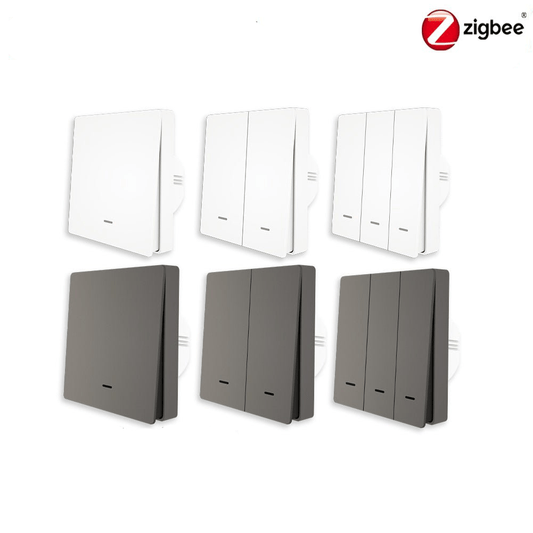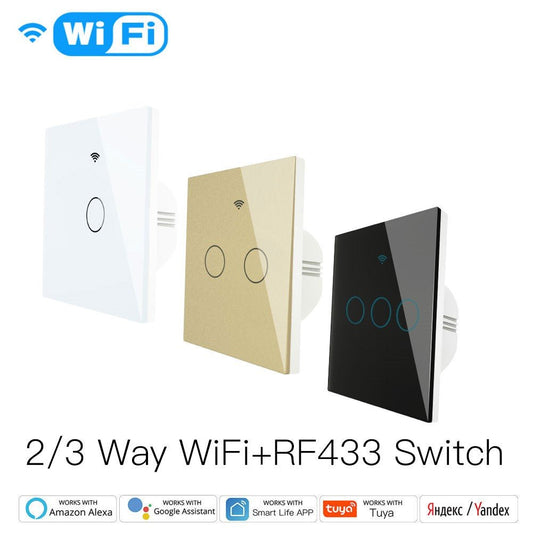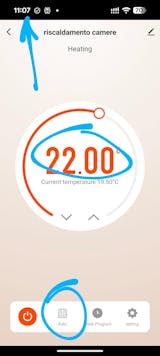In the ever-evolving landscape of smart home technology, Matter has emerged as a pivotal development. Endorsed by tech giants like Google, Amazon, Apple, and IKEA, Matter represents a universal standard designed to streamline the use and integration of smart home devices.
This innovation simplifies everything from purchasing and setup to everyday operation, offering a cohesive and user-friendly experience. The most significant benefit of Matter is its ability to enable interoperability among devices from various brands, ensuring they can work seamlessly across different platforms.
Whether you're using HomeKit, Google Home, or Alexa, Matter-compatible devices are designed to function harmoniously within these ecosystems.
Furthermore, even if your local network experiences disruptions, Matter devices are engineered to maintain quick responsiveness and stable operation, ensuring consistent performance.

As you shop for smart home products, you may start to notice the Matter logo appearing on an increasing number of packages. But what exactly is Matter, and why is it so crucial to the future of smart home technology?
Let's delve deeper to uncover the answers
What is Matter?
Matter is a protocol that facilitates communication among smart devices from various manufacturers. Fundamentally, it focuses on sending standardized commands over a local IP network, rather than introducing a new wireless networking technology.
Matter leverages Thread, Wi-Fi, and Ethernet as its underlying network technologies, with Bluetooth Low Energy (BLE) used for initial pairing or "debugging." This sets it apart from technologies like Z-Wave and Zigbee.
A key feature of Matter is that devices can be controlled locally within the home, eliminating the need for an internet connection for operation and interaction. However, Matter also supports cloud connectivity, enabling remote control and integration with cloud services, thus offering greater flexibility.
Matter ensures a high level of interoperability between different devices and ecosystems. Device manufacturers must comply with Matter standards to guarantee compatibility with major smart home platforms and voice assistants such as Amazon’s Alexa, Apple’s Siri, and Google’s Assistant.
For consumers, this means that any Matter-compatible device can be controlled using their preferred voice assistant or platform, allowing different voice assistants to interact with the same device.
For instance, a Matter-enabled smart light bulb can be paired with Apple HomeKit, Google Assistant, or Amazon Alexa without compatibility concerns. While some devices already support multiple platforms, Matter extends this support to make setting up new devices faster and more straightforward.
Why Matter Matters?
The smart home landscape can be fragmented and confusing, with many accessories supporting both Alexa and Google Assistant, but not always seamlessly. HomeKit, on the other hand, has a smaller pool of compatible products compared to these platforms.
Once Matter is widely adopted, it promises to be beneficial for both users and the smart home industry. Users will enjoy a broader selection of devices and more reliable connections.
Device manufacturers will be able to reach a larger audience and reduce the time spent on platform-specific support, while platform creators will no longer need to invest as much effort in attracting partners.

The significance of a reliable connection cannot be overstated. Smart home devices are often distributed throughout various rooms or outdoor areas, and without a stable signal, they may frequently disconnect from the network.
This issue is exacerbated for individuals with numerous Wi-Fi devices, as routers have a limit to the number of connections they can handle simultaneously. While Wi-Fi 6 reduces this risk, devices using Matter over Thread can virtually eliminate it.
How to Use Matter?

To use Matter, you'll need compatible devices, platforms that support Matter, necessary bridge devices, appropriate network environments, and pairing tools.
Here’s a breakdown of the five essential device roles and their functions:
Matter Hub
Each Matter network requires a central point, known as the Matter Hub. The Hub is responsible for connecting smart devices, setting permissions, coordinating network communications, and providing control interfaces such as automation, data interfaces, and basic control functions. Advanced hubs, like the Homey Pro, support multiple protocols (such as Zigbee, Z-Wave, infrared, and 433MHz) and act as Matter border routers to integrate different types of networks.
Matter Border Router
Matter border routers serve as bridges between LAN (Ethernet or Wi-Fi) and Thread networks. They convert signals between these networks, facilitating communication. Some Matter hubs also function as Thread border routers, enabling seamless connectivity between the two network types.
Matter Devices
These are smart home devices that connect to a LAN network, typically via Ethernet or Wi-Fi. They do not participate in the signaling of the mesh network but can connect to the Internet for enhanced functionality. An example is the MOES smart bulbs, which connects to a LAN network and provides Internet access.
Thread Mesh Extenders
Powered by mains electricity, these devices repeat and extend the Thread signal, improving the coverage and stability of the mesh network. They communicate solely with the Thread network and are not connected to Wi-Fi or Ethernet.
Thread End Devices
These are low-power, battery-operated devices that do not repeat or forward signals; they act solely as a source or destination for data. This type of device is ideal for scenarios requiring long battery life, such as wireless lights or simple switches.
Which Smart Home Devices are Compatible with Matter?
The Matter 1.0 specification supports a limited range of smart home device categories, providing basic functionalities such as on/off, lock/unlock, motion detection, and dimming.
However, some advanced features, such as dynamic lighting effects, adaptive lighting, shared access codes for door locks, and energy management for smart plugs, are not yet supported by Matter. Nevertheless, on platforms that support these advanced features, you can still access them through Matter.

The device categories supported by Matter include:
- Light bulbs and switches
- Smart plugs
- Smart locks
- Security and safety sensors
- Media devices (including TVs)
- Smart blinds and shades
- Garage door controllers
- Thermostats
- HVAC controllers
Expansion with Matter 1.2
With the release of the Matter 1.2 specification, nine new device categories have been added:
- Refrigerators
- Room air conditioners
- Dishwashers
- Washing machines
- Robot vacuums
- Smoke and carbon monoxide alarms
- Air quality sensors
- Air purifiers
- Fans
Some devices will become Matter-compatible through firmware updates, while others will never be compatible. Many devices currently compatible with Thread, Z-Wave, or Zigbee should be able to support Matter, but upgrades are not guaranteed. It is best to consult with manufacturers regarding specific devices and future support.
Can My Existing Smart Devices Use Matter?
Matter offers a degree of backward compatibility, but whether devices can be upgraded depends on their hardware capabilities and manufacturer support. While Matter can be compatible with existing smart devices, not all devices can be upgraded.
Some devices may achieve compatibility with Matter through firmware updates or bridge devices. Devices that cannot be upgraded will continue to operate on their original platforms and can coexist with Matter devices, participating in automation and routine procedures.

Devices Eligible for Upgrade
- Wi-Fi Devices: Many Wi-Fi devices can gain Matter compatibility through firmware updates
- Zigbee Devices: Zigbee devices can bridge to the Matter network through existing hubs
How is Security and Privacy Ensured?
Security and privacy are always top concerns for users in the smart home domain. The core design of Matter is to ensure the security of these aspects.
The Connectivity Standards Alliance (CSA) has published a set of security and privacy principles, intending to adopt distributed ledger technology and public key infrastructure to verify the identity of devices, ensuring that the devices users connect to are genuine, authenticated, and up-to-date.
Additionally, data collection and sharing remain under the control of users, device manufacturers, or platform providers, safeguarding users' control over their personal data.

Traditionally, smart home devices only required a central hub for protection. However, with most Matter devices directly connected to the internet, security risks increase accordingly.
To address this, Matter provides local control functionality, allowing commands from smartphones or smart displays to be directly transmitted to devices in the home network without going through cloud servers. This significantly reduces the risk of hacking and malware attacks.
The Matter standard also protects user privacy through data minimization and end-to-end encryption, sharing only the information necessary for the normal operation of devices, ensuring that even in the event of a security breach, the leaked information is minimal. However, comprehensive privacy protection and regulatory compliance still rely on cooperation from service providers and device manufacturers.
Everything Else You Need to Know About Matter
Once you have alerted us you wish to make a return through an email contact.We will email a link to start the easy return process.
Many existing smart home products can be upgraded to the Matter standard through software updates. Therefore, it is recommended to closely monitor notifications from device manufacturers to understand when devices will support Matter.
The setup process for Matter devices is straightforward. It utilizes digital and QR setup codes along with low-energy Bluetooth to simplify setup, typically requiring just one step to onboard them to your network, app, and/or platform.
Matter devices can receive updates via wireless update capabilities. Additionally, they employ methods such as end-to-end encryption and data minimization to protect user privacy, ensuring minimal risk of information leakage. However, comprehensive privacy protection still requires support from device manufacturers and service providers.
Matter devices can interoperate with other technologies like Zigbee through smart home bridges to interact with devices using other protocols. While Matter and Zigbee share similarities in underlying technologies, they are distinct protocols and do not possess native interoperability.
All Matter devices come with device certification certificates issued by designated root CAs. Additionally, device manufacturers must place their product's data into a Distributed Compliance Ledger (DCL).
Matter offers multi-administrator support, allowing users to choose which platforms can access their devices, enhancing user control and flexibility.
Matter devices can be tested by any Alliance-authorized testing service provider that has been verified to perform Matter certification tests to ensure compliance with standards.
If you currently own existing smart home accessories and they suffer from unstable or oversaturated Wi-Fi connections, adopting Matter over Thread could theoretically have a significant impact. The issue is that you may have to upgrade multiple products at once to see the benefits, including any products serving as hubs that cannot be updated to Matter through software updates.
If you are not concerned about Wi-Fi coverage or occasional operation without internet access, then Matter is truly just a nice option. Once Matter is available, devices supporting Alexa, HomeKit, or Google Assistant will continue to support these platforms.

